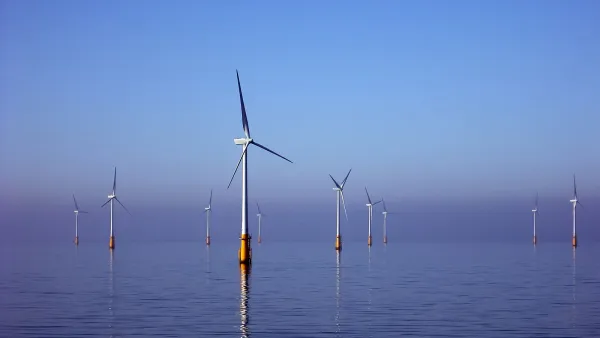Chinese wind-turbine manufacturers are making a push into the U.S. market. Some say the move will create green jobs and foster growth, while others worry it threatens America's still-developing industry.
While the U.S. is one of the largest producers of wind power in the world, wind currently meets only 2% of the country's electricity demand, according to Tom Zeller and Keith Bradsher. The industry has effectively stalled due to the economic crisis, but advocates hope the introduction of lower-priced turbines from China will restart growth. Chinese-manufactured turbines sell for $600,000 a megawatt versus $800,000 for Western models.
However, critics are particularly skeptical of Chinese companies, Zeller and Bradsher say. Although international manufacturers already play a role in U.S. wind, Chinese companies pose a unique threat to U.S. manufacturers because of the backing they receive from the country's government, the authors write:
"After G.E., the current market leaders in this country are Vestas of Denmark, Siemens of Germany, Mitsubishi of Japan and Suzlon of India. None of the governments of those countries, though, are suspected of unfairly favoring their home industries and discriminating against foreign competitors on anything approaching China's scale."
FULL STORY: China’s Push Into Wind Worries U.S. Industry

National Parks Layoffs Will Cause Communities to Lose Billions
Thousands of essential park workers were laid off this week, just before the busy spring break season.

Retro-silient?: America’s First “Eco-burb,” The Woodlands Turns 50
A master-planned community north of Houston offers lessons on green infrastructure and resilient design, but falls short of its founder’s lofty affordability and walkability goals.

Delivering for America Plan Will Downgrade Mail Service in at Least 49.5 Percent of Zip Codes
Republican and Democrat lawmakers criticize the plan for its disproportionate negative impact on rural communities.

Test News Post 1
This is a summary

Test News Headline 46
Test for the image on the front page.

Balancing Bombs and Butterflies: How the National Guard Protects a Rare Species
The National Guard at Fort Indiantown Gap uses GIS technology and land management strategies to balance military training with conservation efforts, ensuring the survival of the rare eastern regal fritillary butterfly.
Urban Design for Planners 1: Software Tools
This six-course series explores essential urban design concepts using open source software and equips planners with the tools they need to participate fully in the urban design process.
Planning for Universal Design
Learn the tools for implementing Universal Design in planning regulations.
EMC Planning Group, Inc.
Planetizen
Planetizen
Mpact (formerly Rail~Volution)
Great Falls Development Authority, Inc.
HUDs Office of Policy Development and Research
NYU Wagner Graduate School of Public Service



























